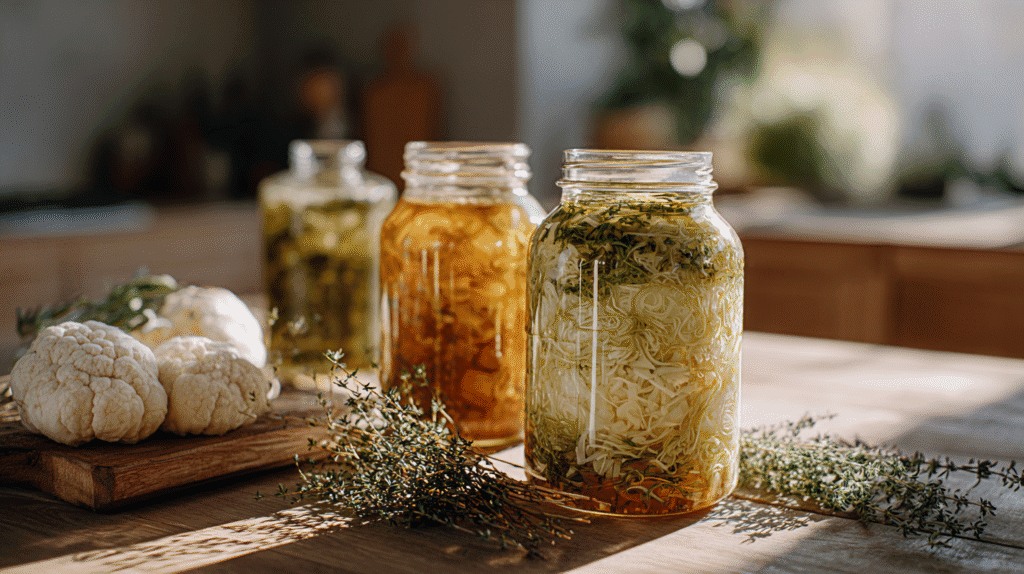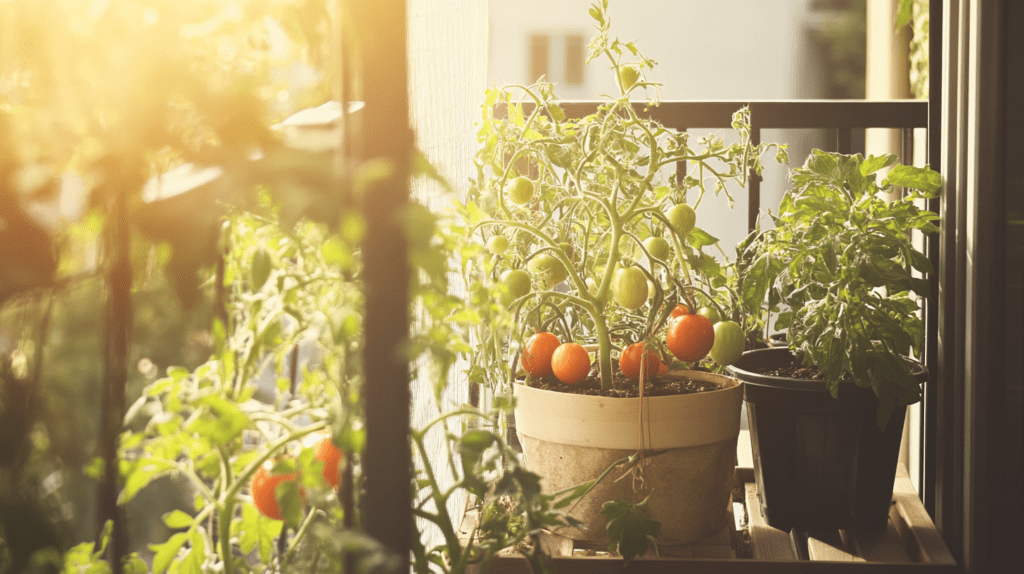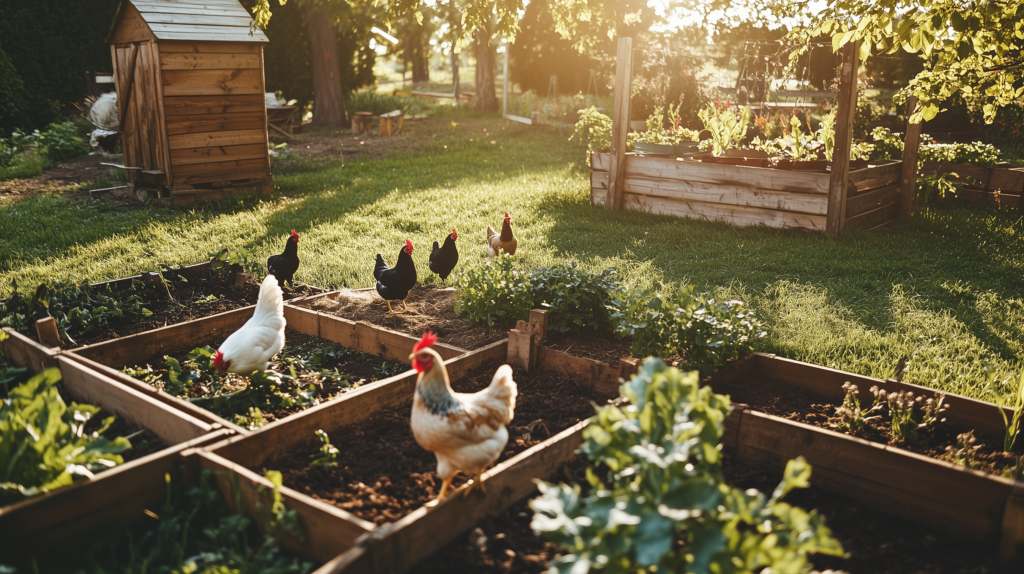This post may contain affiliate links, including those from Amazon Associates. If you make a purchase through these links, I may earn a commission at no additional cost to you. Learn more about our affiliate policy.
Each autumn, the abundance of fresh produce at farmers markets sparks a desire in me to capture the season and hold onto it a little longer.
Rows of ripe tomatoes, colorful fruits, and fragrant herbs inspire visions of stocked shelves, jars of preserved goods, and a sense of security as colder days approach.
But for many of us in small apartments, this vision feels impractical or even impossible.
I’ve been there, wondering how to preserve food effectively in limited kitchen space, wrestling with jars stacked precariously on tiny counters, and struggling with overcrowded freezers.
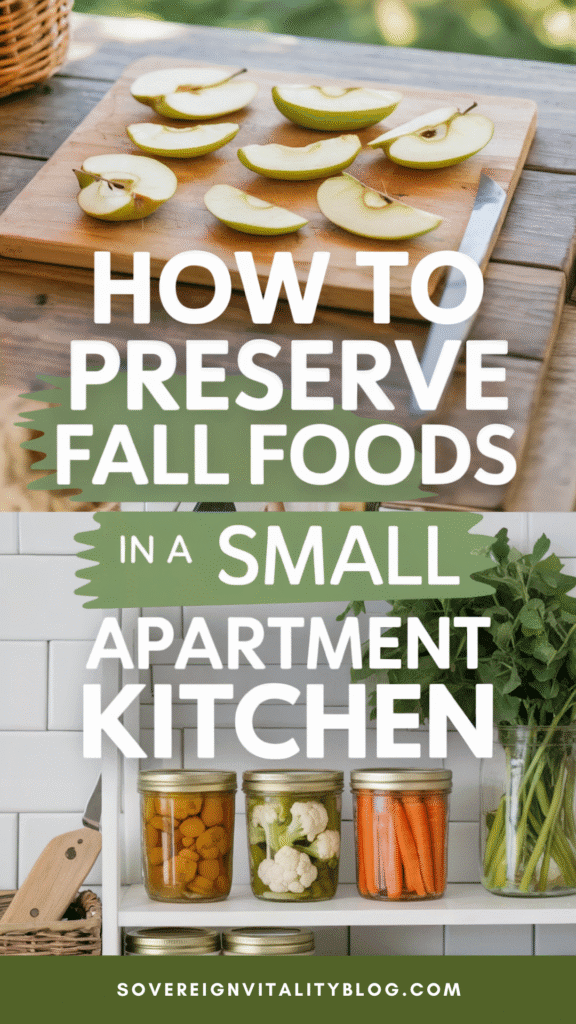
Over the years, however, I’ve discovered a variety of practical strategies and storage hacks shared generously by fellow urban gardeners and preservation enthusiasts in online communities.
If you dream of preserving your fall harvest but worry about limited space, let me reassure you: preserving food in an apartment kitchen can be rewarding and entirely achievable.
Here are clear, actionable ways to turn even the smallest kitchen into a thriving preservation station.
Optimize Your Storage Space
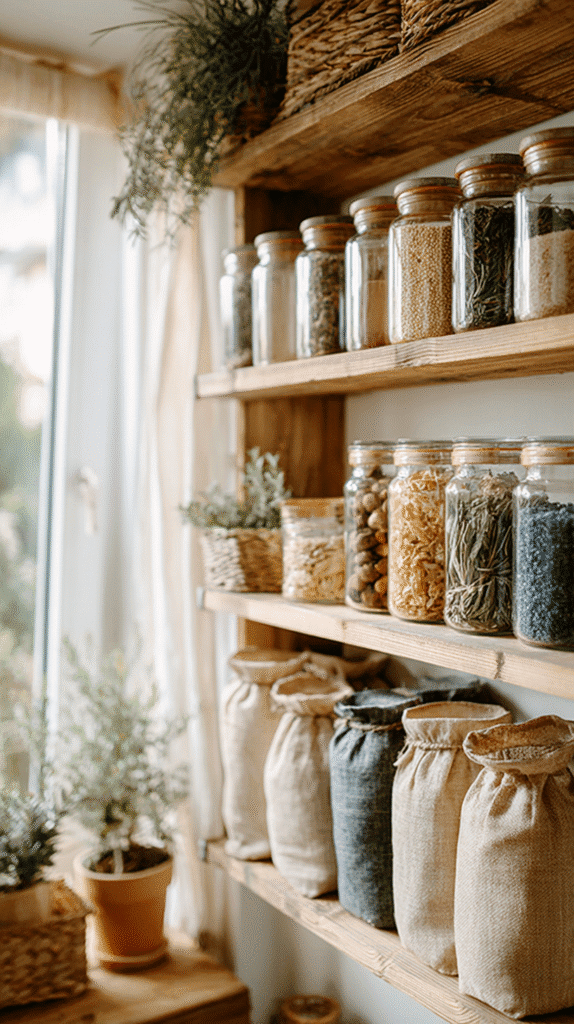
The most common challenge faced by urban homesteaders is limited storage. Maximizing your apartment space efficiently is key to successful preservation projects.
Use Vertical Storage:
When horizontal space is scarce, go upward.
Tall shelving units and multi-tiered shelves are essential for preserving jars, dried herbs, or storage bins. I installed tall shelves reaching toward the ceiling, turning previously empty vertical space into valuable food storage real estate.
Stack your shelves methodically, putting frequently used items at eye level, with lesser-used jars or containers stored higher.
Utilize Unconventional Spaces:
Don’t overlook unconventional storage spots like under your bed or inside closets. These areas can store boxes or containers filled with canned goods or root vegetables.
Even the space above cabinets or behind doors can be repurposed creatively. Clear bins or labeled storage tubs can transform these hidden areas into reliable storage zones, making room in your kitchen for daily cooking essentials.
Magnetic Storage Solutions:
In small spaces, magnets are your friends. Attach magnetic strips or tins to the sides of your refrigerator or metal surfaces to store spices, knives, or smaller jar lids. This approach frees up precious drawer and counter space and keeps essential items within easy reach.
If you’re looking to set up your apartment pantry from scratch, my guide on How to Start Urban Homesteading This Fall can help you begin.
Freeze Foods with Efficiency
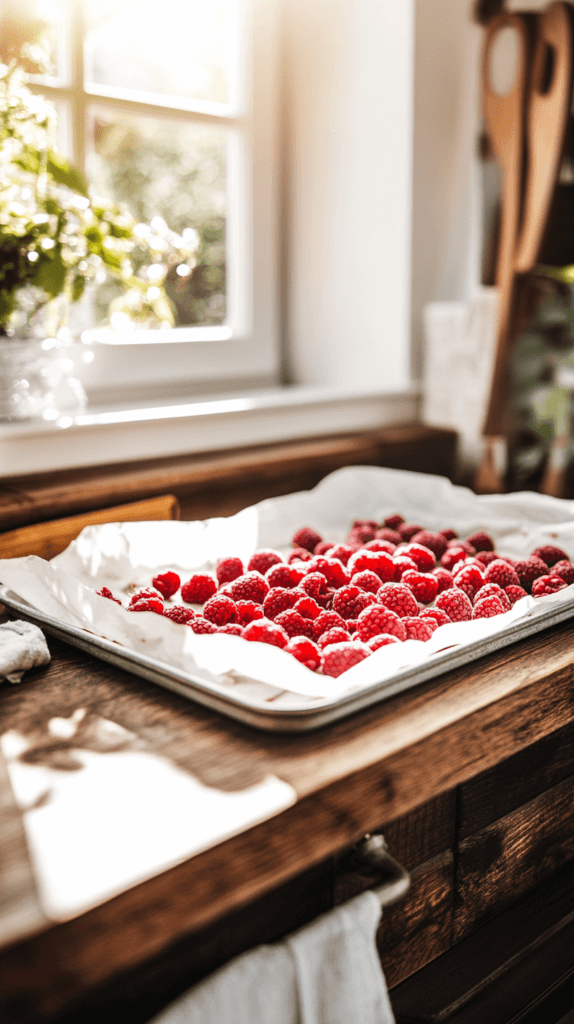
Freezing food is a straightforward method of preservation, ideal for limited spaces. However, compact freezers in small apartments demand efficient techniques.
Flat Freezing Technique:
Rather than tossing chopped vegetables or fruits loosely into freezer bags, flatten and freeze them on trays first. Once solid, transfer these neat, compact portions into resealable bags. This method makes stacking and organizing simple, maximizing available freezer space.
Soupercubes and Uniform Containers:
Soups, stocks, and sauces are great for freezing but can take up awkward space. Invest in uniform-shaped containers or silicone Soupercubes. These allow you to store perfect, stackable portions, utilizing every inch of freezer capacity effectively.
Repackage Store-Bought Frozen Foods:
Many packaged frozen items come in bulky bags filled mostly with air. Repackage frozen veggies or fruits from store-bought bags into compact freezer-safe bags or containers to reclaim valuable freezer real estate.
Small-Batch Canning and Pickling

The beauty of apartment-friendly canning is that you don’t need elaborate equipment or large batches. Small-batch canning fits comfortably into tiny kitchens.
Water-Bath Canning Basics:
Water-bath canning is excellent for acidic foods like tomatoes, jams, pickles, and chutneys. Even without a traditional canner, you can use a large stockpot fitted with a rack at the bottom. Canning a few jars at a time rather than large batches reduces overwhelm and storage issues.
Fermentation as Preservation:
Fermenting vegetables is a simple, space-saving method that doesn’t require special equipment. Quart-sized jars of sauerkraut, kimchi, or pickled carrots easily fit on kitchen shelves. These nutrient-rich preserves add valuable probiotics to your diet, bringing healthful benefits alongside storage efficiency.
Quick Pickling Method:
Quick pickling is an easy way to preserve almost any vegetable from summer, and it only involves vinegar water and a clean jar. Find 7 Quick Pickled Vegetable Recipes here.
Dehydrating Foods with Minimal Equipment
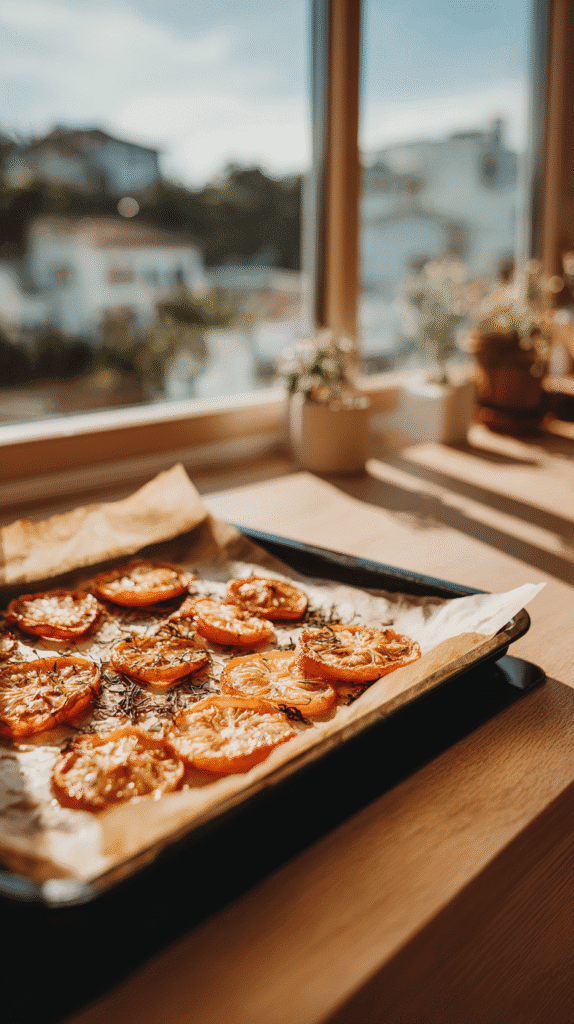
Dehydrating is a powerful method of preservation that doesn’t require a large investment or space.
Oven Dehydration Method:
If investing in a dehydrator feels daunting, your oven on its lowest heat setting works just as effectively. Dry apple slices, herbs, zucchini chips, or tomatoes on parchment-lined trays, storing them afterward in airtight glass jars or reusable silicone bags.
Stackable Small Dehydrators:
A compact, stackable dehydrator is ideal for apartments, offering the convenience of drying multiple trays of fruits, vegetables, or herbs at once. Dehydrated foods become shelf-stable and take minimal room in pantry storage, extending your harvest throughout winter months.
Smart Fridge and Pantry Organization
Preservation extends beyond traditional methods, how you store fresh foods directly impacts their longevity.
Proper Storage of Leafy Greens and Vegetables:
To keep greens crisp, store them in airtight bags with a slight sprinkle of water in your fridge. Root vegetables last longer when their leafy tops are removed. Mushrooms stay fresh longer when stored in paper bags, allowing them to breathe properly.
Clear Bins for Easy Organization:
Clear organizer bins help group similar pantry or fridge items together, reducing food waste and improving visibility. Having easy access means you’re more likely to use what you store, avoiding forgotten produce. I love these clear refrigerator bins made specifically for keeping vegetables fresh longer.
Mechanical and Low-Tech Preservation Solutions
In apartments, creative low-tech solutions make a significant difference.
Temporary Cooler Root Cellar:
An insulated cooler placed on a shaded balcony or within a closet can mimic root cellar conditions. Fill it with root vegetables, apples, or squash, especially during cooler months. This method frees refrigerator and pantry space while extending produce freshness.
Proper Non-Refrigerated Storage:
Items like garlic, onions, potatoes, and winter squash prefer cool, dark places outside the fridge. Store these in baskets or boxes within your pantry or cabinet spaces to maximize their shelf life.
Practical Guidelines for Apartment Preservation Success
Beyond preservation methods themselves, adopting clear habits makes preservation manageable and efficient.
- Label Everything Clearly:
Labeling jars, bags, and containers with dates and contents simplifies meal planning and rotation, minimizing waste. - Sterilize and Prepare Containers Thoroughly:
Always sterilize your containers to ensure food safety, particularly when canning or fermenting. - Batch Prep in Manageable Quantities:
Break preservation projects into smaller, more frequent sessions rather than overwhelming yourself with large tasks all at once. Your kitchen will remain functional, tidy, and productive. - Maintain a Simple Inventory Log:
Consider a simple pantry log or digital spreadsheet tracking preserved items. Staying organized helps you use everything efficiently. - Celebrate Each Preserved Item:
Appreciate every jar, bag, or container you fill. Each preserved item is an investment in your self-sufficiency and wellness.
A Pantry Built with Intention
As winter approaches, opening my pantry and seeing jars filled with colorful preserved foods brings deep satisfaction. Each preserved jar or carefully stacked freezer container isn’t just practical, it’s empowering.
Your apartment kitchen, regardless of size, holds great potential for food preservation.
By creatively optimizing storage, efficiently managing fridge and pantry space, and thoughtfully choosing preservation methods, you can confidently embrace fall preservation.

